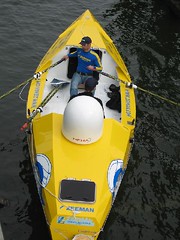Lots in Alaska for… Free?
Monday, March 19th, 2007
Rocket scientists looking for a cheap place to crash might want to check out the friendly hamlet of a recent AP report, the town is giving away land in a fashion reminiscent of the old Homestead Act of the 1862. Here’s the skinny direct from the city’s web page on the give away:
"The City of Anderson is selling up to twenty-six lots at no costs starting March 19, 2007 at 9:00 AM. Applications will be selected on a first come, first served bases. A $500.00 refundable deposit will be required at the time of application. Applicant will be required to build a residential home within 2 years from date of signed agreement. Other covenants and restrictions apply. Lots are 1.3 acres in size, electrical and phone has been installed. In April, the city council will hold a lot selection meeting for applicants to select their individual lots, based upon the first come, first served criteria. For more information contact the city clerk @ 582-2500 or [email protected]."
Supposedly those who are already up there or proxies in the area are most likely to get access to the lots, since the Post Office doesn’t deliver mail to city offices until after noon.
So why might Rocket Scientists be up for cold (but free) Alaska winters? Well, it seems the Clear Air Force Station is located not too far away from the free lots, making them ideal cheap digs for those looking up and listening to the night sky for Uncle Sam. While it might not be northernmost military base in the US (that honor belongs to Thule Air Base in Greenland), its certainly among the coldest. Hey, at least its neighboring communities are pretty hospitable, right? Look, residents can even participate in the Nenana Ice Classic (just 20 miles from Clear AFS), that lets people win if they guess when the ice in the Tanana River finally moves out. Watching ice melt… talk about a good time!
 HD display to get the picture, right?
HD display to get the picture, right? Have you ever contracted the annoying song virus?
Have you ever contracted the annoying song virus?

 I think you’ll agree this is not
I think you’ll agree this is not 
